The best wireless keyboards do more than free you from a cable. They let you dispense with the crummy keyboard you got for free with your PC—does anyone like that one?—and they also give you options and flexibility in features. The models we’ve reviewed range from full-size desktop slabs to gaming-centric planks to portable options that skip easily from laptop to tablet to phone. Whatever you need to type with, there’s a wireless keyboard for it.
We’ve based our reviews on hours spent with each model, banging away on work projects, surfing the web, and keeping up on social media. There’s truly no one size to fit all, but our reviews aim to give you enough specifics to make a sound decision based on your personal circumstances. Check out our buying advice at the end to help you choose from other models you find.
For more tetherless convenience, see our roundup of the best wireless mice.
Updated 7/25/2022 If you’re in the market for a small form factor wireless gaming keyboard, be sure to check out our latest review of the Corsair K70 RGB Pro Mini. It packs (almost) every possible feature you could want such as hot-swappable switches and RGB in a keyboard that’s teeny tiny—and super pricey.
The best wireless keyboards
Logitech K800 Wireless Illuminated Keyboard – Best overall wireless desktop keyboard
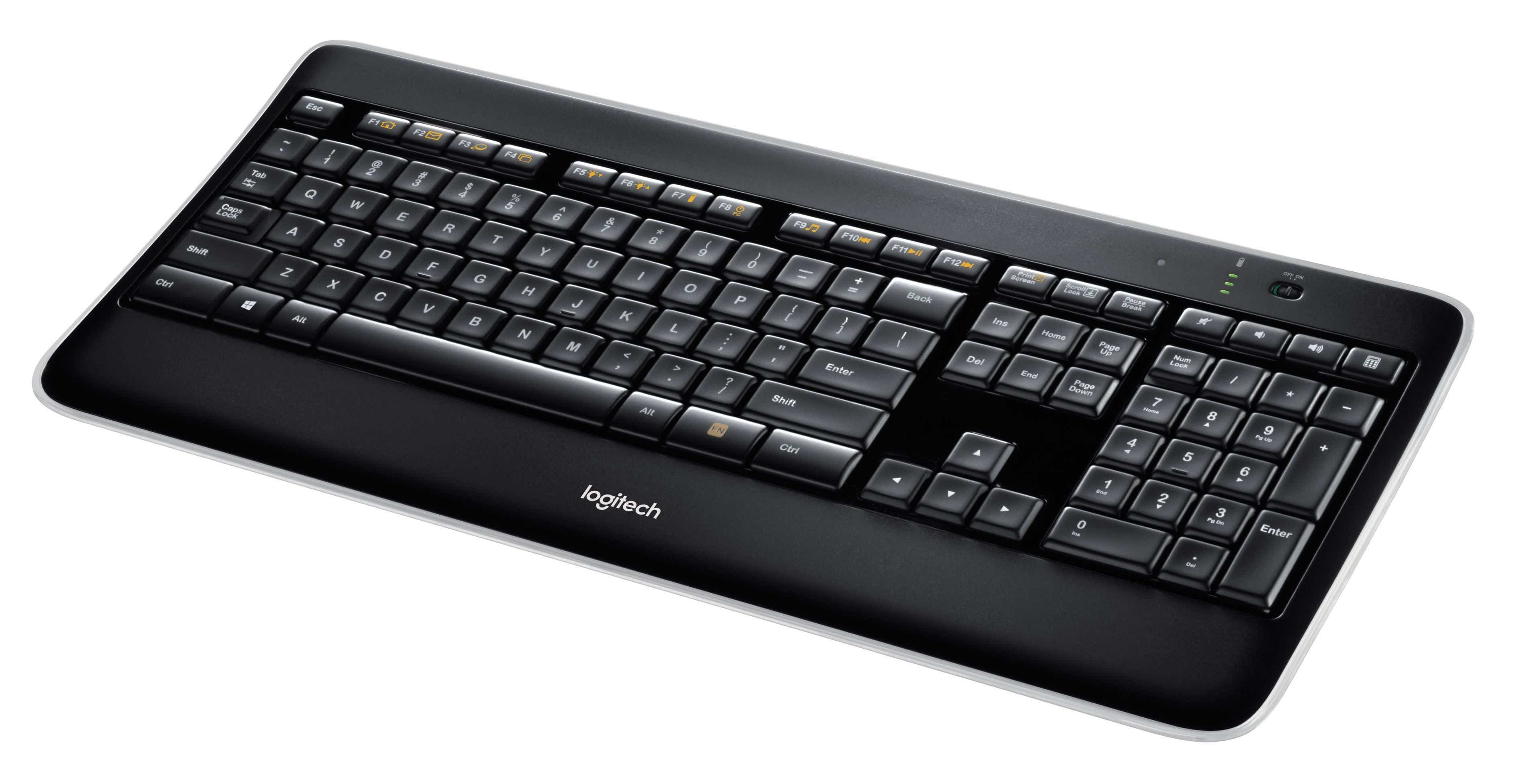
Pros
- Adjustable backlighting
- Quiet, responsive keys
- Universal receiver lets you connect multiple mice and keyboards to a single computer
Cons
- Thin chassis is a little bendy
Logitech’s K800 Wireless Illuminated Keyboard is indispensable if you often type late into the evening or otherwise work in dark environments. This backlit keyboard not only provides the necessary light but also offers one of the most comfortable and pleasant typing experiences we’ve encountered, all at an affordable price.
Read our full
Logitech K800 Wireless Illuminated Keyboard review
Logitech MK540 Advanced Wireless Keyboard and Mouse Combo – Best value proposition
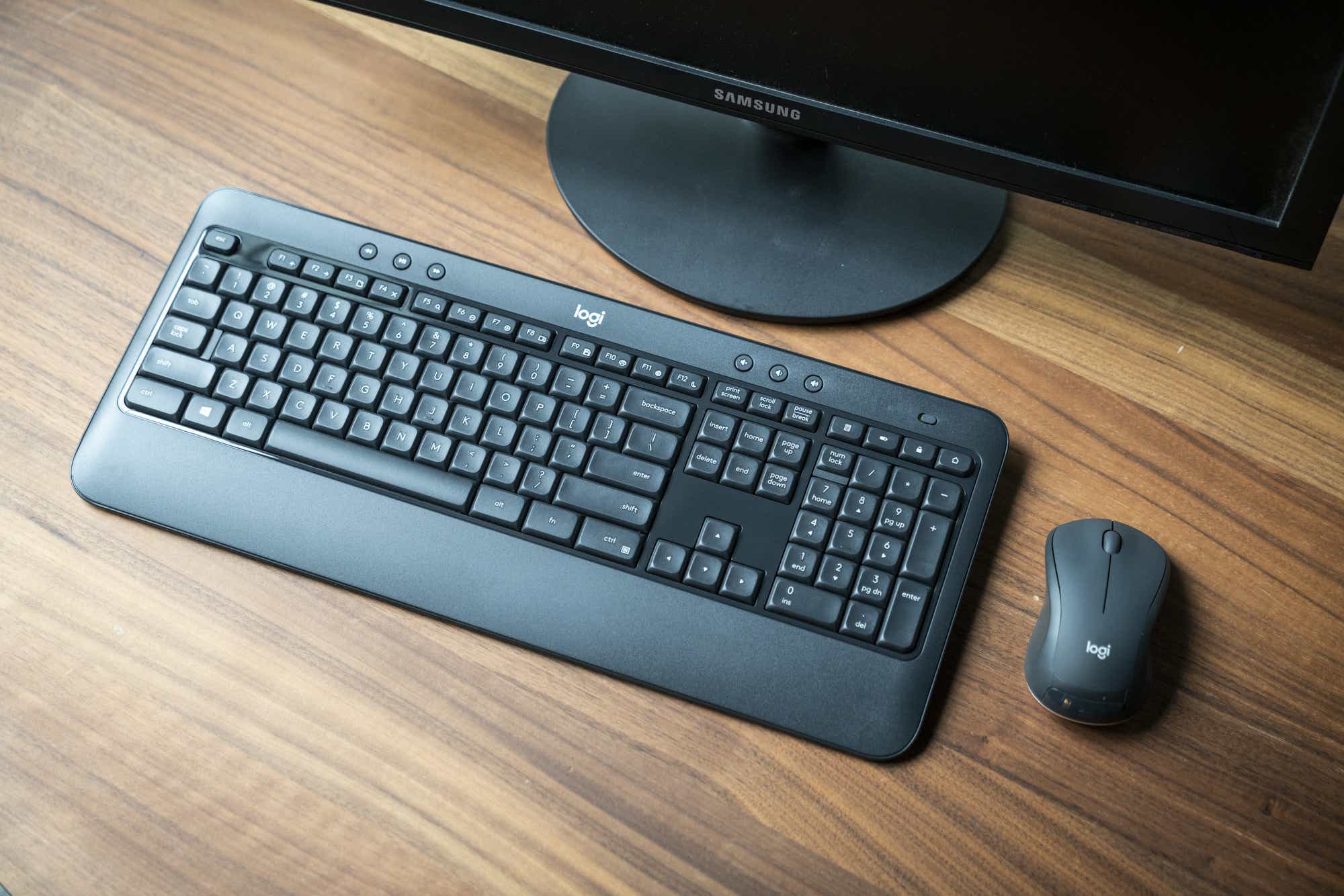
Pros
- Quiet yet tactile keys
- Programmable function keys and mouse gestures
- Roomy, comfy design
Cons
- Too bulky for mobile use
- Limited MacOS support
Logitech does it again with the MK540 Advanced combo. It might not have the convenience of backlighting that the K800 offers, but it hits all the other important features for productivity: a roomy layout, dedicated media buttons, a numpad, programmable keys, and tactile typing. In addition to all that, the keyboard comes with a decent wireless mouse, that is itself programmable, so you’re good to go.
Read our full
Logitech MK540 Advanced Wireless Keyboard and Mouse Combo review
Macally Full Size Wireless RF Keyboard for Windows PC – Best ultra-budget wireless keyboard

Pros
- Responsive keys
- Roomy layout
- Easy wireless setup
Cons
- Shortcut keys are not programmable
- No backlighting
The Macally Full Size Wireless RF Keyboard (RFJJKEY) makes a great no-frills keyboard replacement for your desktop or laptop. It’s got a roomy layout, simple wireless setup, and responsive keys—in other words, it covers all the basics with aplomb, at a price that can’t be beat.
Read our full
Full Size Wireless RF Keyboard for Windows PC (RFJJKEY) review
Razer BlackWidow V3 Pro – Best wireless gaming keyboard
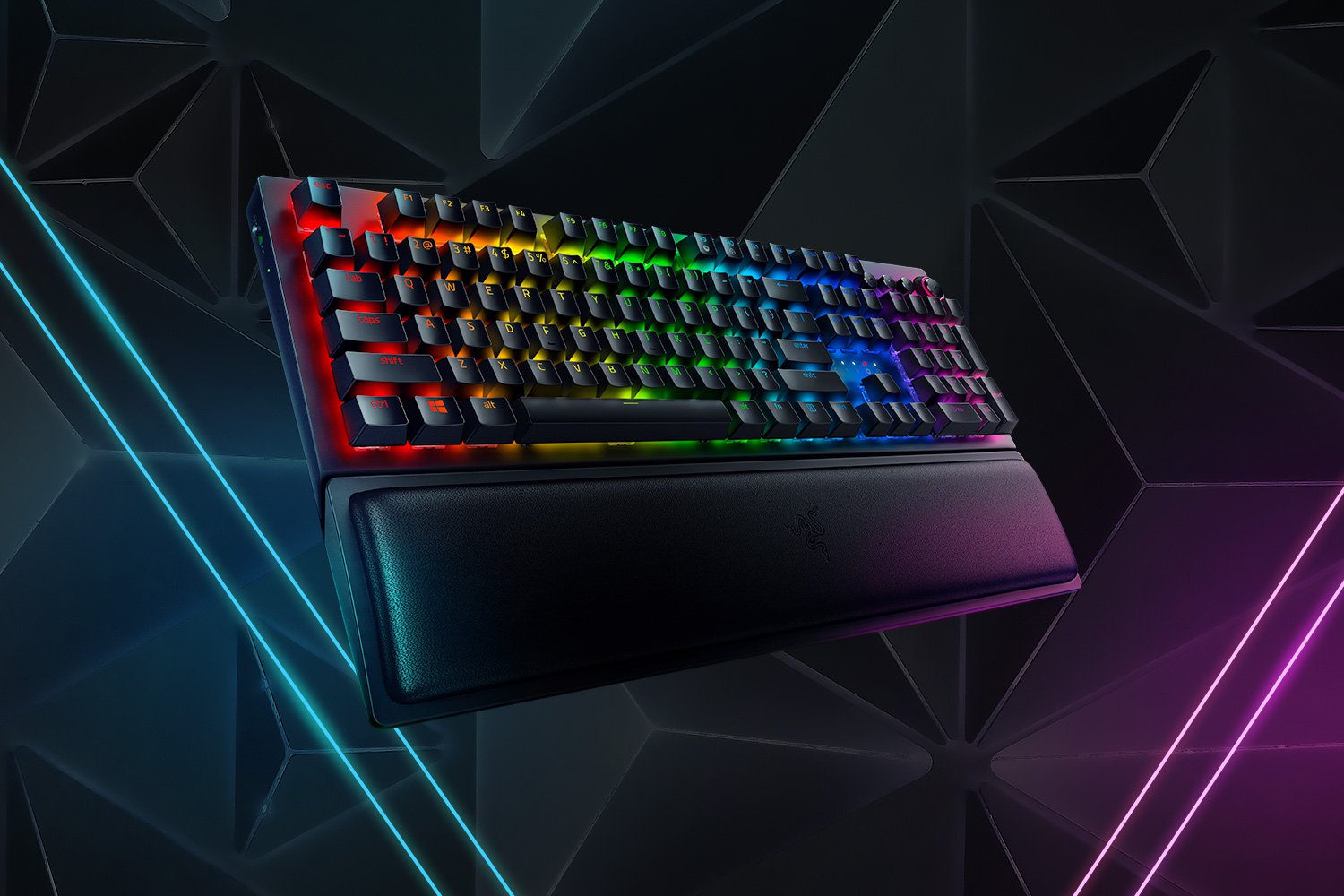
Pros
- Super-smooth switches
- Great media controls
- Comfy wrist rest
Cons
- Expensive ABS
- Keycaps are a little cheap
For a long time, Corsair’s K63 has been our pick for best wireless gaming keyboard. We still like that keyboard a lot, but after recently reviewing the Razer BlackWidow V3 Pro, we’ve found a new favorite. It’s got everything you’d want from a gaming keyboard: full-size layout, mechanical switches, RGB, a wrist rest, a volume wheel—and the convenience of a wireless connection. Yes, it’s also pretty pricey, as premium products often are. That leaves the K63 as a still-very-respectable lower-priced alternative.
Read our full
Razer BlackWidow V3 Pro review
Corsair K63 – Best budget wireless gaming keyboard

Pros
- Wireless Cherry MX keyboard
- Fully single-color backlit
- Reasonably priced, for a wireless device
Cons
- Battery is very short with the backlight on
- No housing for the dongle
- Only one color of backlighting and one switch type, at the moment
Corsair’s K63 wireless gaming keyboard is compact, durable, and reasonably comfortable to type on. It was one of the first wireless mechanical keyboard from a major manufacturer, and the first with backlighting, though its single, bright-blue color will either thrill or annoy you. Still, whether you’re in for casual couch gaming or just want a cleaner, wire-free desktop, the K63, featuring real Cherry MX switches, is a solid choice and it costs about half the price as our top pick for wireless gaming above.
Read our full
Corsair K63 review
Logitech MX Keys Mini – Best wireless keyboard for travel
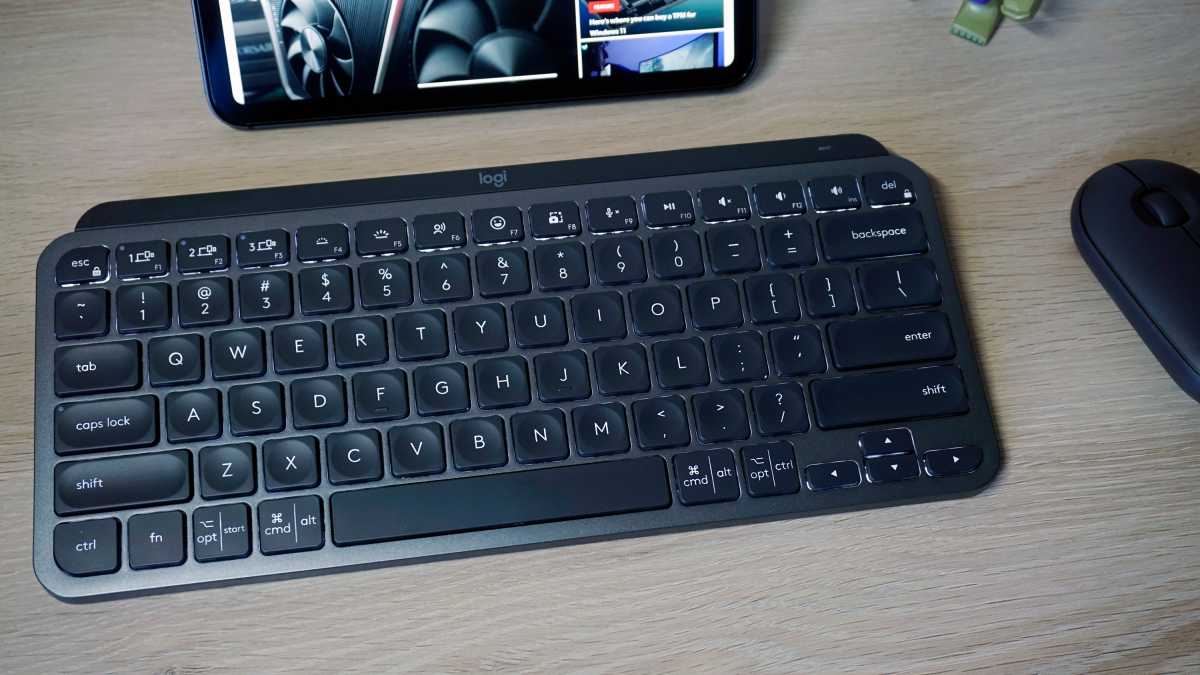
Pros
- Tiny size
- Great typing experience
- Customizable controls
- Multi-device pairing
Don’t let the relatively high price scare you off. The MX Keys Mini is probably the best compact wireless keyboard around. It’s small but mighty—super comfortable to type on, offers a semi-customizable layout, supports multi-device switching, and more. If you want to work on the go, this board is not only an easy pack, it easily earns its keep by deftly standing out from others in its class.
Read our full
Logitech MX Keys Mini review
K780 Multi-Device Wireless Keyboard – Best full-size multi-device option
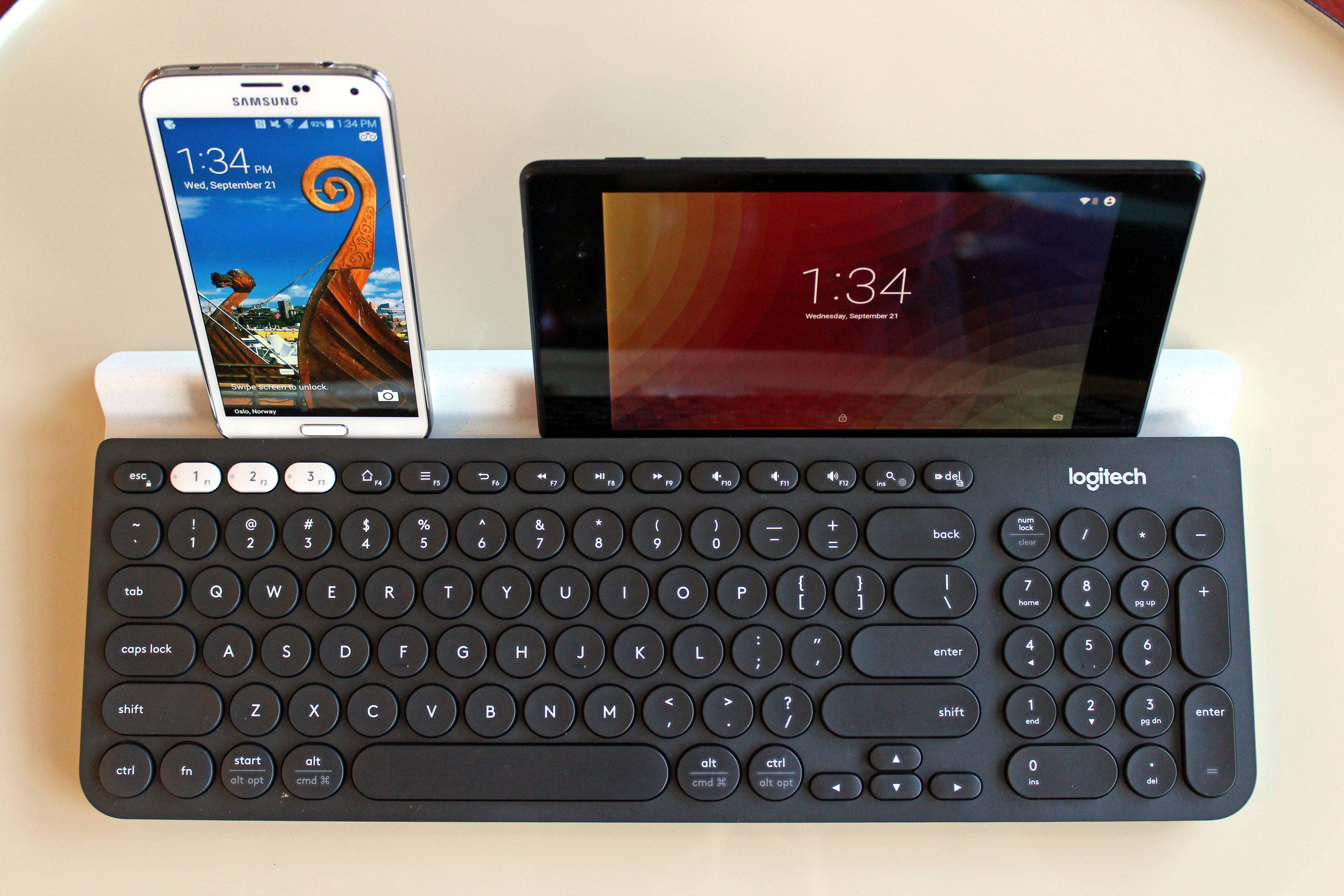
Pros
- Works with all major platforms
- Can toggle between three paired devices
- Quiet keys with great travel
Cons
- Not built for portability
If you like the convenience of a Bluetooth keyboard that can switch among different devices, but don’t require the compact layout of the MX Keys Mini, Logitech’s K780 Multi-Device Wireless Keyboard promises to be the one keyboard to rule all your computing gizmos. Indeed, it’s fully compatible with Windows, Mac OS, Chrome OS, Android, and iOS for fast and effortless switching between your computer, smartphone, and tablet. It also costs a good deal less than the MX Keys Mini, and offers a roomy layout with a numpad.
Read our full
Logitech K780 Multi-Device Wireless Keyboard review
Logitech Ergo K860 – Best ergonomic wireless keyboard
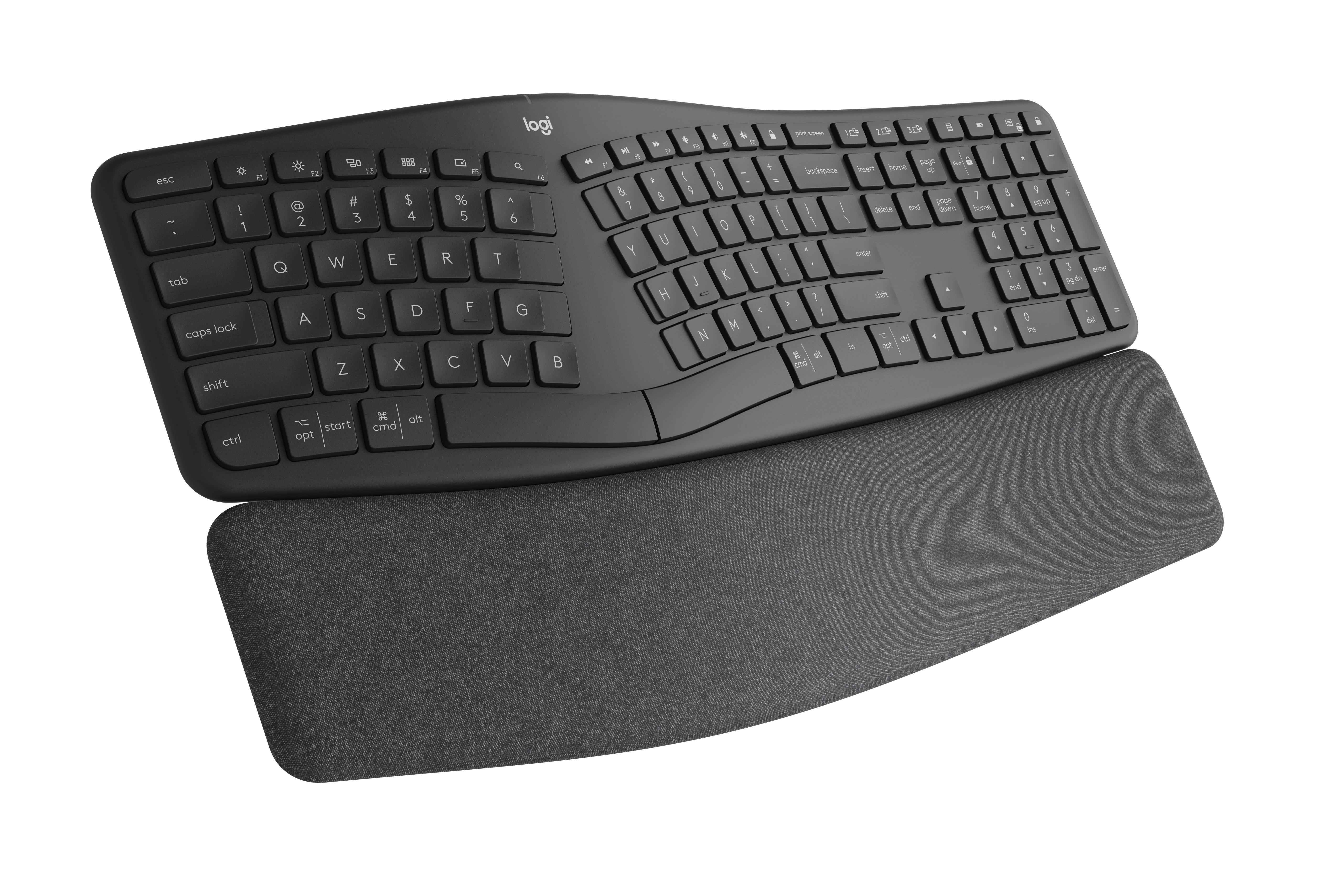
Pros
- Curved and split ergonomic design
- Comfortable wrist support
- Palm raise feature lets you adjust height for sitting or standing
Cons
- Requires some time to get used to split design
- Expensive
Logitech’s Ergo K860 has finally conquered our skepticism about awkward ergonomic keyboards. In the course of our review, there was a marked improvement in typing comfort and reduced muscle tension, all without sacrificing productivity to a steep learning curve. It’s a little expensive compared to a conventional wireless keyboard, but if you’re struggling with comfort, the K860 is the only ergonomic keyboard we’d heartily recommend.
Read our full
Logitech Ergo K860 review
Retro Classic BT Elwood – Coolest-looking wireless keyboard
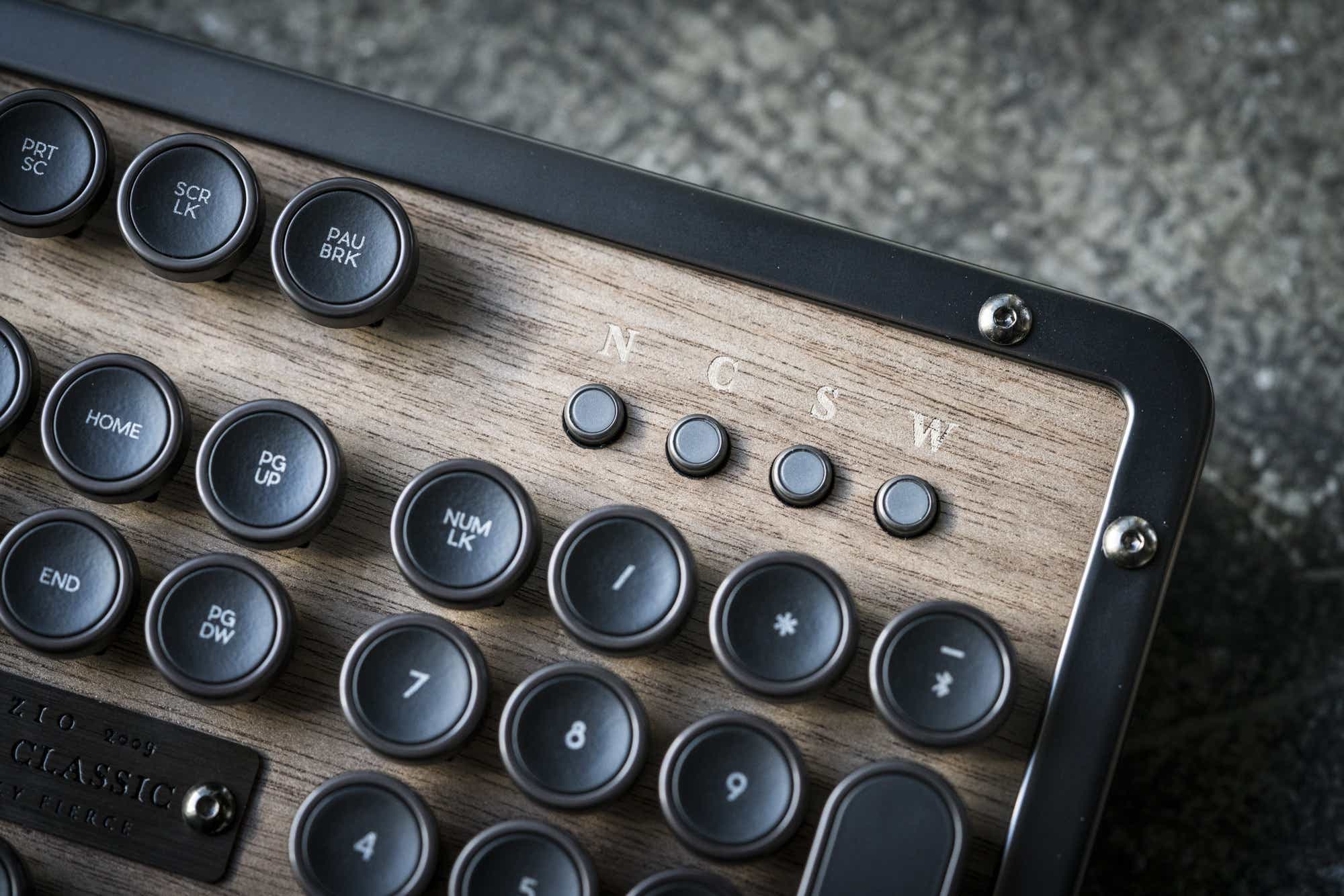
Pros
- Beautiful vintage design
- LED-backlit keys
- Satisfying clickiness and travel
- Extra keycaps for Mac users
Cons
- No programmable keys
- Loud switches may bother your neighbors
The Azio Retro BT Classic is a vintage-style mechanical keyboard priced like a real antique, but if you have the cash, it’s certainly striking. From its deep, clicky keystrokes and wood or leather paneling to its LED-backlit keys and rechargeable battery, the Bluetooth-enabled Retro Classic will delight serious typists with old souls and money to burn.
Read our full
Retro Classic BT Elwood review
Wireless keyboards: Bluetooth vs. USB
Wireless keyboards connect to a PC in one of two ways: via Bluetooth or a USB receiver. Some older Windows 7 machines may not support Bluetooth. On the other hand, if you need a keyboard to work across different platforms on newer devices, a Bluetooth-enabled model is what you need.
All the USB receiver-driven models in this roundup were flawless examples of plug-and-play keyboards. Pairing Bluetooth keyboards (compared to Bluetooth headsets, let’s say) requires a few more steps, and only one of the models was slightly flaky in maintaining its connection.
Bluetooth keyboards tend to cost a little more but also offer longer battery life. As you’re shopping (particularly if you have big fingers), keep in mind that some hardware makers sacrifice the keys’ size and spacing to give you portability.
How we test wireless keyboards
It was hands-on all the way with our keyboard testing. We spent at least one full workday typing exclusively on each model we tested, with follow-up time to allow for a learning curve. We assessed the primary typing experience: key design, typing feel, and even noisiness. We also tried the secondary features: hotkeys, switches and dials on multi-platform models, and even the ability to adjust the angle or other comfort characteristics.
We considered the size, weight, and durability of each model against its purpose—whether it was designed to be portable or desk-bound, and compact or fully featured. For instance, we balance the versatility of multi-platform models like Logitech’s K780 against its performance as an actual keyboard you need to use every day (and in this case, it wins on all counts).
How to shop for a wireless keyboard
You’re going to use this keyboard every day, so make sure it fits your typing habits and your needs. Here’s what to keep in mind as you shop.
Size: A model that will always sit on your desktop can be bigger and heavier, and usually some other advantages some with that. As more of us carry laptops or tablets, however, we’ll look for models that are compact or portable. These will sacrifice some features but be easier to take with you.
Keys: Look for keys that are sculpted and spaced for typing comfort. This is why we encourage trying before buying: We’ve had very different experiences with traditional keys vs. chiclet-style vs. flatter key designs, and it’s surprising how little things like the texture or the amount of dimple will make or break a choice. Most mainstream keyboards use membrane technology, which is adequate for most users, but heavy-duty users and gamers will likely prefer keyboards with mechanical switches (which are not reviewed here). Windows hotkeys, or even programmable keys, are great bonuses, especially for power users.
Adjustability: Some keyboards offer no adjustment for angle or height. Look for models with adjustable legs or feet. We haven’t included ergonomic models in this round of reviews.
Battery needs: All wireless keyboards use batteries. Check closely for the type and number of batteries you need, and whether a starter set is included. We note the vendors’ specified battery life in each review.




